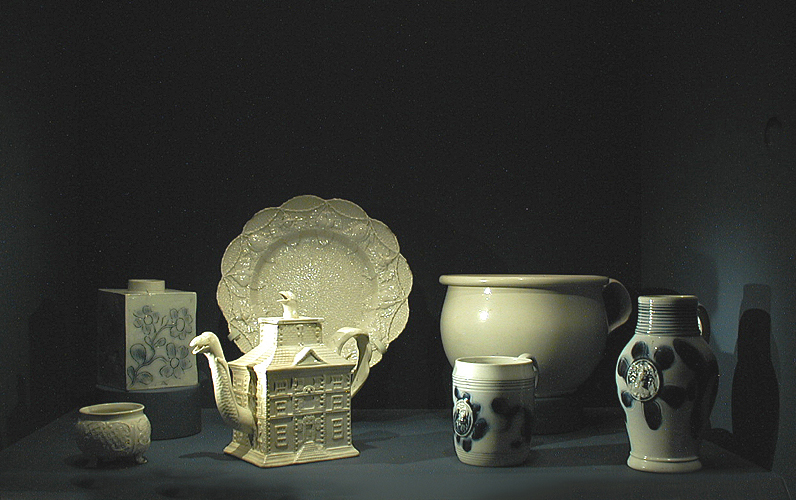…this kind of ware was much in request about
1740.
Josiah Wedgwood, Commonplace Book, January 15, 1765
Actually, Wedgwood was wrong. Despite the pronouncement of the great eighteenth-century
potter and entrepreneur, white salt-glazed stoneware had been “in request”
since about 1710 and would continue to be so into the 1780s. Less readily
chipped and scratched than delftware, it became a staple of the middle-class
English home as its quality improved and more elaborate slip-cast shapes became
available (1 and 2). When the public tired of its whiteness, cobalt-filled
designs were scratched onto its sides (4). Eventually, as creamware ousted
stoneware from the family table, stoneware potters shifted to producing not-so-good
variants on blue-on-gray imports from Germany (6 and 7).
7. Jug, salt-glazed stoneware. Marked
GR, ca. 1775–1800.
6. Mug, salt-glazed stoneware. Marked
GR, ca. 1775–1800.
5. Chamber pot, salt-glazed white
stoneware, ca. 1750–1775.
4. Tea caddy, salt-glazed white
stoneware, ca. 1760–1775.
3. Dinner plate, press-molded salt-glazed
white stoneware, ca. 1755.
2. Teapot, slip-cast salt-glazed
white stoneware, ca. 1745–160.7
1. Salt, slip-cast salt-glazed white
stoneware, ca. 1745–1755.

